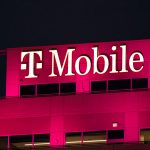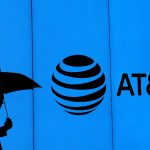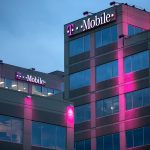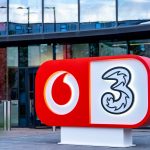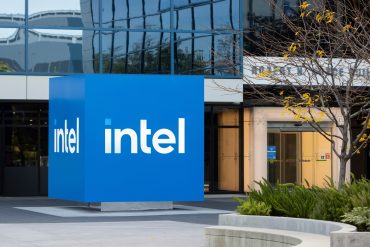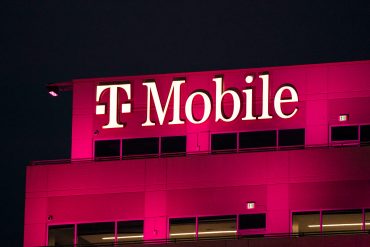
- 5G
- Earnings Season
- Telecom
Verizon Q3 Earnings: Revenue Miss and Leadership Transition
6 minute read

Verizon reported $33.8 billion in Q3, narrowly missing expectations but reaffirming stability as new CEO Dan Schulman begins a strategic and cultural transformation.
Key Takeaways
-
Q3 revenue reached $33.8 billion with EPS of $1.21, reaffirming Verizon’s operating stability. Adjusted EBITDA climbed to $12.8 billion, while free cash flow rose 9% to $15.8 billion year-to-date.
-
Broadband momentum accelerated, adding 306,000 net subscribers (261,000 fixed wireless, 61,000 Fios) as 5G investments began converting into tangible share gains against cable rivals.
-
Leadership transition to Dan Schulman marks a strategic reset, prioritizing AI-driven personalization, $1–2 billion in structural cost cuts, and renewed growth across enterprise and broadband.
Introduction
In a quarter defined by precision rather than spectacle, Verizon Communications delivered results that underscored endurance over exuberance. Revenue of $33.8 billion rose 1.5% year-on-year, narrowly missing consensus but offset by disciplined profitability: adjusted EPS of $1.21 surpassed expectations, net income doubled to $5.1 billion, and EBITDA expanded to $12.8 billion. Free cash flow for the nine months through September advanced 9% to $15.8 billion, supporting a 19th straight annual dividend increase.
CFO Tony Skiadas reaffirmed guidance: wireless service revenue growth of 2.0–2.8%, EBITDA expansion of 2.5–3.5%, and full-year free cash flow between $19.5 and $20.5 billion. The figures reflect a carrier balancing maturity and momentum—positioned not for hypergrowth but for measured, cash-generative resilience.
Key Developments
The quarter marked the first under incoming CEO Dan Schulman, who succeeds Hans Vestberg after a decade of 5G leadership. Schulman outlined a two-track strategy: cultural simplification and technological acceleration. He has mandated a flatter organization, AI-driven customer engagement via myPlan, and a $1–2 billion structural cost-reduction program over the coming cycles.
Operationally, wireless service revenue rose 2.1% to $21 billion, while consumer postpaid phone adds dipped to a 7,000 loss—attributed to promotional tightening in a saturated market. ARPA increased 2% to $147.91, driven by premium 5G Ultra Wideband plans and enterprise synergies. Business segments offset consumer softness, posting 110,000 postpaid adds including 51,000 phones.
Broadband emerged as the growth catalyst: 261,000 fixed wireless adds and 61,000 Fios adds lifted total broadband subscribers by 11.1% year-on-year. Capital expenditures remained below $18.5 billion as 5G build-outs matured, enabling higher returns on existing infrastructure and new AI-edge deployments.

Market Impact
Investors interpreted the results as steady-handed navigation through a competitive storm. Verizon shares rose 2% intraday following the announcement, defying minor top-line misses. At a forward P/E below 9x and a dividend yield above 6.5%, the stock offers defensive appeal in a volatile macro climate.
Peer context magnifies the resilience: T-Mobile’s subscriber offense and AT&T’s fiber push continue, yet Verizon’s margin discipline and balance sheet strength reassure institutional holders. Debt levels remain investment-grade, affording optionality for targeted M&A or repurchases under Schulman’s tenure.
Verizon’s stock rose in intraday trading following the earnings call, reflecting investor confidence in Schulman’s disciplined cost-reduction approach and the durability of wireless and broadband margins. Analysts viewed the results as a stabilizing signal in a competitive telecom landscape dominated by T-Mobile’s subscriber growth and AT&T’s fiber expansion. The modest revenue miss did little to shake faith in Verizon’s dividend reliability, reinforcing its appeal among income-focused institutional investors.
Strategic Insights
The leadership handover signals a cultural inflection. Schulman, renowned for transforming PayPal into a fintech powerhouse, seeks to infuse Verizon with similar operational velocity. His mandate is explicit: streamline decision chains, embed AI throughout the customer journey, and reorient the company around high-margin broadband and enterprise segments.
Verizon’s hybrid strategy—fiber for stability, fixed wireless for scale—positions it to capture share from cable operators while monetizing its 5G lead. Network reliability scores from J.D. Power and emerging AI-edge computing partnerships reinforce a narrative of disciplined innovation over disruption.
Dan Schulman’s arrival marks a clear inflection in Verizon’s corporate direction—one that prioritizes efficiency, digital customer experience, and renewed operational tempo. His background at PayPal positions him to modernize consumer engagement through streamlined product offerings and automated service delivery. The company’s emphasis on broadband expansion and enterprise connectivity suggests a longer-term pivot from subscriber volume to revenue quality and ecosystem retention.
Expert Opinions and Data
Analysts welcomed the steady execution. Goldman Sachs maintained a “Buy” rating with a $52 target, citing broadband momentum and leadership continuity. Barclays raised its target to $48, highlighting Schulman’s operational track record and potential for margin expansion through AI automation and cost controls. Consensus projects FY 2025 free cash flow approaching $20 billion and stable dividend coverage at 1.5x.
Third-party data from Ookla and OpenSignal place Verizon first in U.S. network reliability and coverage consistency for the fourth consecutive quarter, validating infrastructure returns on $150 billion+ in 5G investments since 2019.
Industry analysts at JPMorgan and Wells Fargo characterized Verizon’s Q3 as “a steady hand in volatile conditions,” noting that margin improvement and strong free cash flow outweigh short-term subscriber softness. Independent telecom data from RootMetrics confirms Verizon’s continued lead in network reliability, a key differentiator in saturated markets. Analysts expect Schulman’s cost discipline and digital integration strategy to lift earnings by 3–4% over the next fiscal year, barring major spectrum expenditures.
Conclusion
Verizon’s third-quarter results reveal a company entering a phase of measured renewal rather than aggressive reinvention. The transition from Hans Vestberg to Dan Schulman underscores a shift from infrastructure build-out to operational precision and disciplined execution. With broadband growth offsetting consumer softness and cash flow supporting a near-7% dividend yield, Verizon stands as a stabilizing presence in a consolidating industry.
The coming quarters will test whether Schulman can translate cultural overhaul into sustainable growth—but the foundation appears resolutely intact. If his strategy succeeds, Verizon could reassert itself as the financial and operational benchmark for the U.S. telecom sector—a company defined not by disruption, but by endurance.

